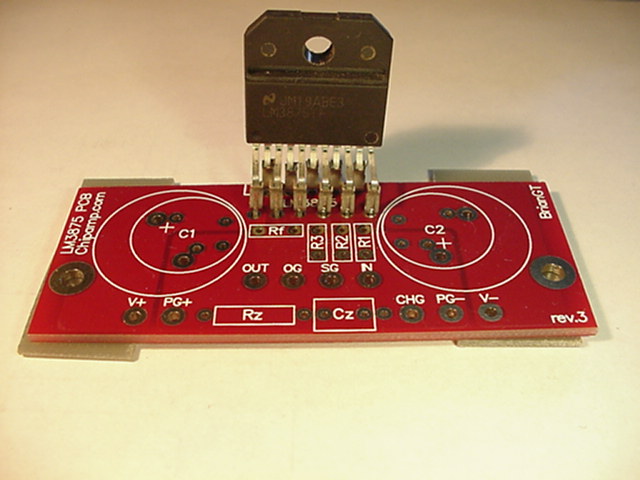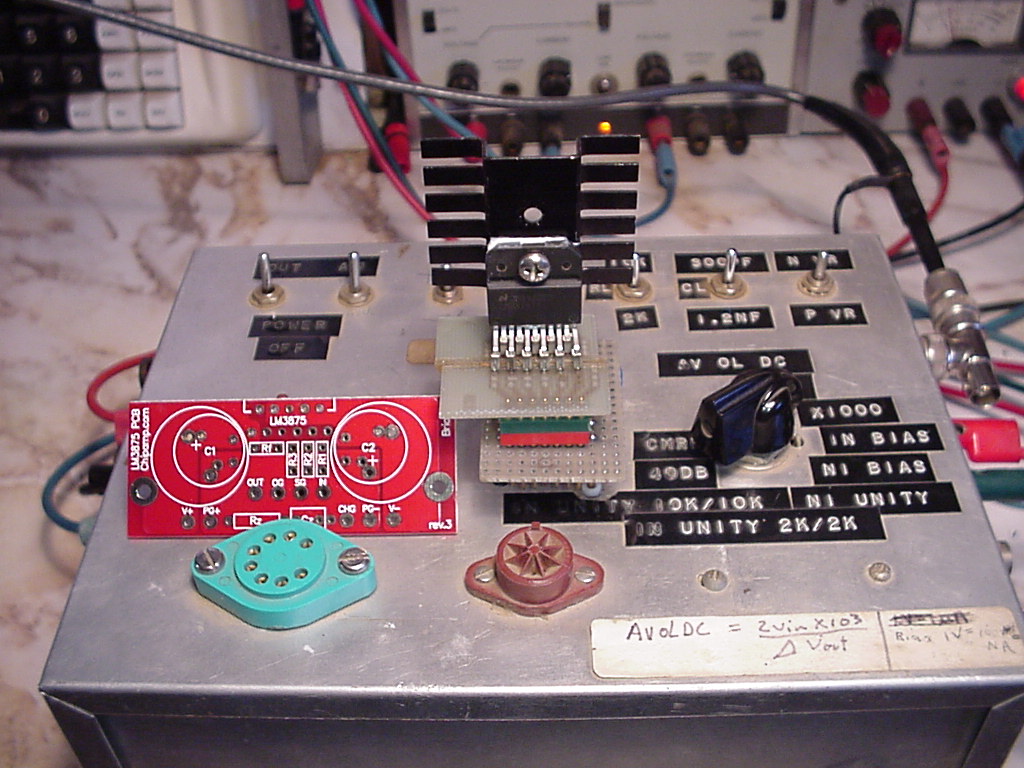I'm looking for a LM3875 socket. Single pin sockets would be OK.
The pins are .015" thick, .038" wide, .134" spacing in two rows. The pins come in two rows .200" front to back.
Data sheet LM3875:
http://www.ti.com/lit/ds/symlink/lm3875.pdf
The pins are .015" thick, .038" wide, .134" spacing in two rows. The pins come in two rows .200" front to back.
Data sheet LM3875:
http://www.ti.com/lit/ds/symlink/lm3875.pdf
Normally you would never socket a power amp chip due to the high currents and the expensive consequences of a bad contact on the speakers
Normally you would never socket a power amp chip due to the high currents and the expensive consequences of a bad contact on the speakers
I agree, but it can be tested for many parameters without a load. Then moved to a board and soldered in for testing with a speaker.
See Opamp test circuits.
http://www.diyaudio.com/forums/anal...screte-opamp-test-circuits-2.html#post3185578
Last edited:
If the leads fit, the turned pin type of IC socket can be broken up and soldered into a pcb with appropriate sized holes. Twenty years ago I used to buy these pins on a metal header matching a dil IC size for in board soldering, but I haven't seen these for a long time.
If the leads fit, the turned pin type of IC socket can be broken up and soldered into a pcb with appropriate sized holes. Twenty years ago I used to buy these pins on a metal header matching a dil IC size for in board soldering, but I haven't seen these for a long time.
Great idea, thanks.
Attachments
Twenty years ago I used to buy these pins on a metal header matching a dil IC size for in board soldering, but I haven't seen these for a long time.
I would like to buy some of these pins, any ideas where I can find some?

Buy 14/16/20 way dil sockets and break them up.
The ones in the photo are the cheaper leaf contact, not turned pin
The ones in the photo are the cheaper leaf contact, not turned pin
Those are good quality. Be careful that the leads you want to plug in fit, turned pin sockets have a limited diameter range and some devices, especially power, have very wide leads
I am pretty sure this will end in tears for you.
I would prefer to invest in some de-soldering braid...
I would prefer to invest in some de-soldering braid...
Those sockets are way too small.
Thanks anyhow.
I am pretty sure this will end in tears for you.
I would prefer to invest in some de-soldering braid...
I use the socket pins for low current test parameters.
I'm designing some Op Amp test fixture adapters for the LM3886 and LM3875. The first adapter is the LM3875.
Test fixture measurements for LM3875, (Data sheet).
TA = 104° F
Vos = 0.128 mV, (10 mV)
Iibin = +90.9 nA, (1 μA)
Iibni = –85.7 nA, (1 μA)
SR = 20 V/μs, (5 μs)
As you can see, the measurements are much better than the data sheet maximum limits.

Datasheet maximums are selected to be good enough for the major customers, while being loose enough for most chips to pass and be FAST to test. Measuring nA currents on a production line is fiddly
I might have missed the explanation in earlier posts - so apologise if I am asking a repeat question. But...
What is it that compels you to want to measure these parameters? Are you planning to use these devices in some unconventional application?
Remember that these parameters will be quite dependent on temperature and to a lesser extent time etc...
What is it that compels you to want to measure these parameters? Are you planning to use these devices in some unconventional application?
Remember that these parameters will be quite dependent on temperature and to a lesser extent time etc...
The amplifier is being used as a bipolar current sink. The amplifiers are selected for several parameters to meet the specifications for the application.
I believe National used a staggered ZIF socket in their proto-typing.
I found a LME49830 demo board parts list, but no socket was listed.
Do you have a link for the socket?
Thanks
Last edited:
If this is being used as the power stage of a current sink, you would probably be best off going something a tad more complex. I would consider using a low offset drift, low input offset operational amplifier as the sense element, and use the LM3886 as the power stage.
Alternatively, if you are not running this over a large range of currents, you might want to consider the error that the offset / bias of the LM3886 introduces, and size the current sense element appropriately.
But this is just me.
Alternatively, if you are not running this over a large range of currents, you might want to consider the error that the offset / bias of the LM3886 introduces, and size the current sense element appropriately.
But this is just me.
- Status
- Not open for further replies.
- Home
- Design & Build
- Parts
- LM3875 socket
